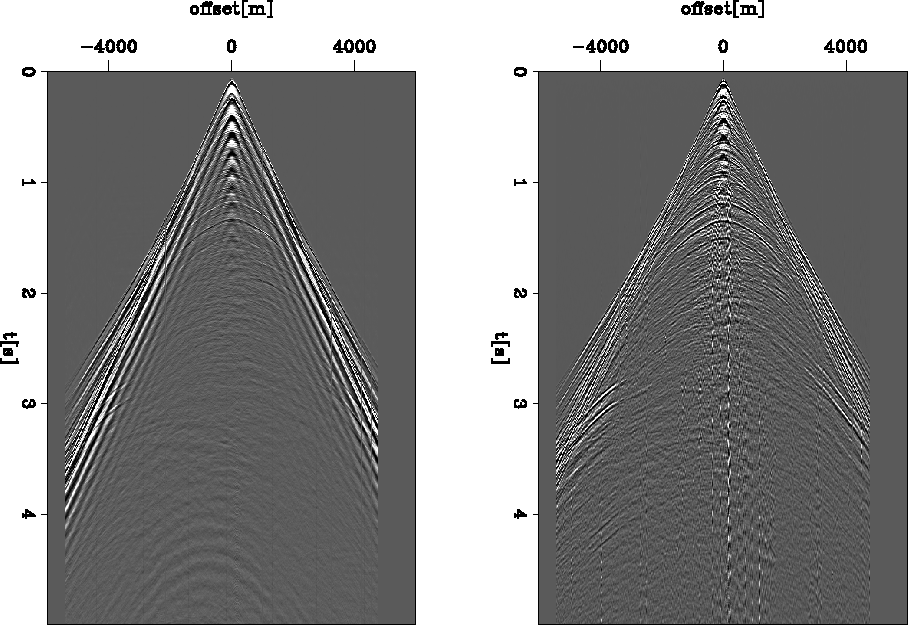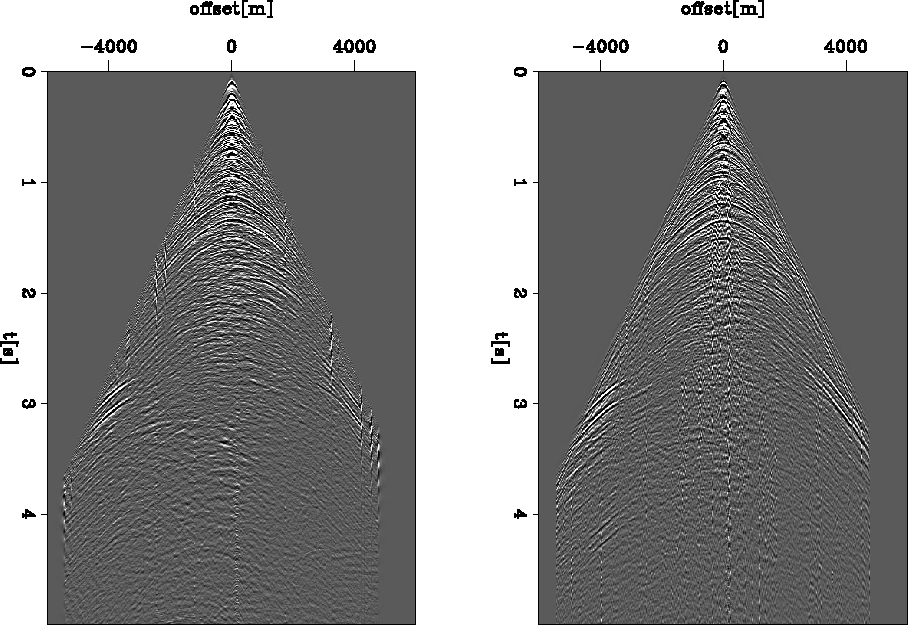 |
Figure 1 One common-shot gather for the Mahogany data set. The left panel shows the hydrophone component and the right panel shows the geophone component.
This section illustrates some of the problems with the Mahogany data set. Figure 1 shows the hydrophone (left) and the geophone (right) components of a common shot gather. Note the events with a predominantly linear moveout on the hydrophone component. These events represent an interface wave, one that travels in the first layer below the water bottom with a characteristic velocity of 1500m/s. Due to the high energy of these events and theirs dispersive characteristic it is not possible to observe and analyze the contribution of the far offset traces to the moveout of the reflections. Hence, it is important that we eliminate these events without destroying the main reflections. Because this noise has a characteristic linear moveout, a radial noise model serves to approximate and eliminate these events.
The pseudo-unitary implementation of the radial-trace transform Brown and Claerbout (2000) promises to be an efficient technique to suppress the noise in the hydrophone component, because the radial-trace transform lowers the apparent temporal frequency of these radial events.
After the radial noise suppression, we also performed a mute with the water velocity and a bandpass filter. Figure 2 shows the same gathers as in Figure 1 after the radial-trace noise suppression for the hydrophone component and the mute and bandpass filtering for both the hydrophone and geophone components. Now, it is possible to observe more clear reflections in the hydrophone component of the shot gather. Most of these events match with those observed in the geophone component of the shot gather.
 |
 |
![[*]](http://sepwww.stanford.edu/latex2html/movie.gif)